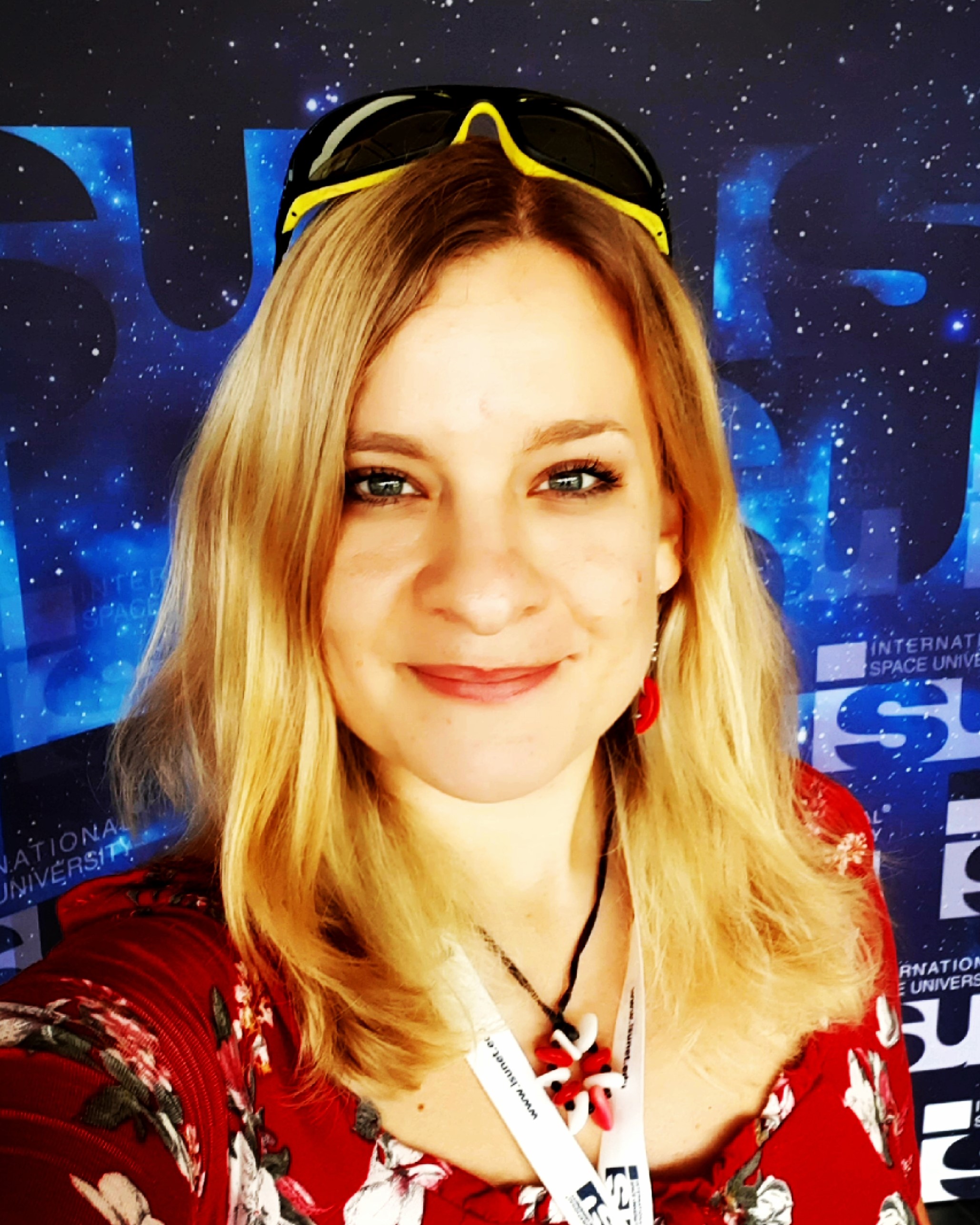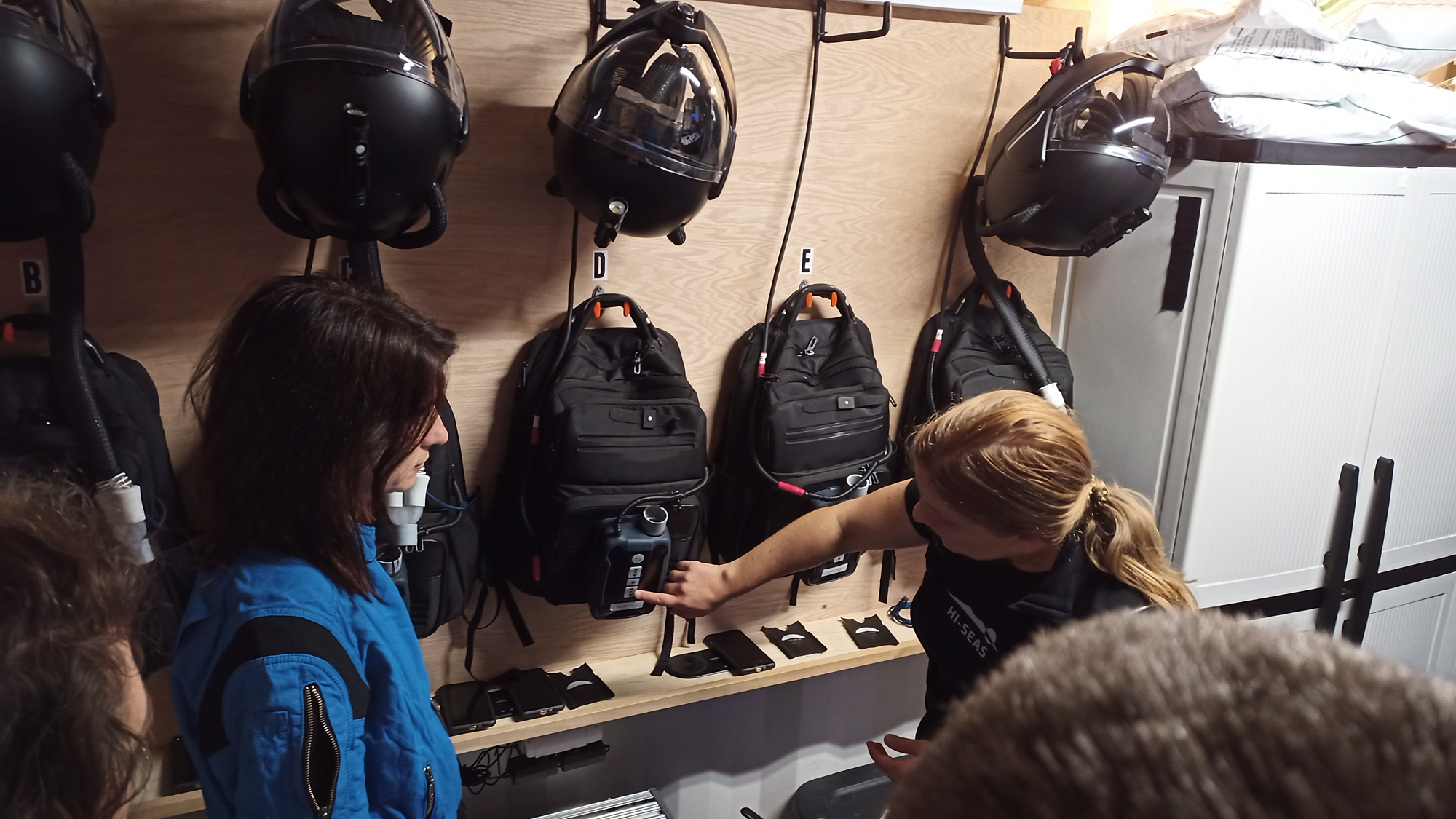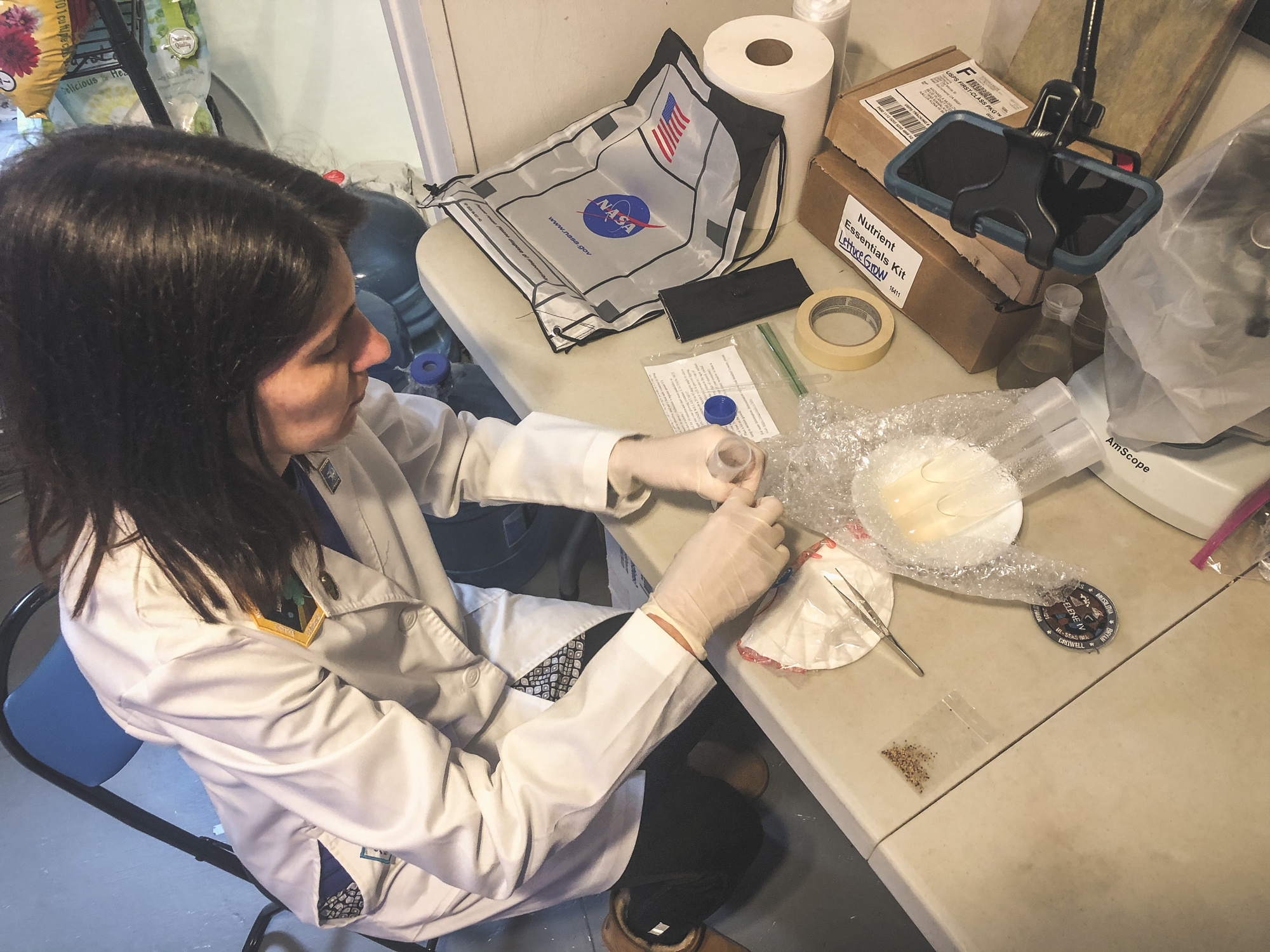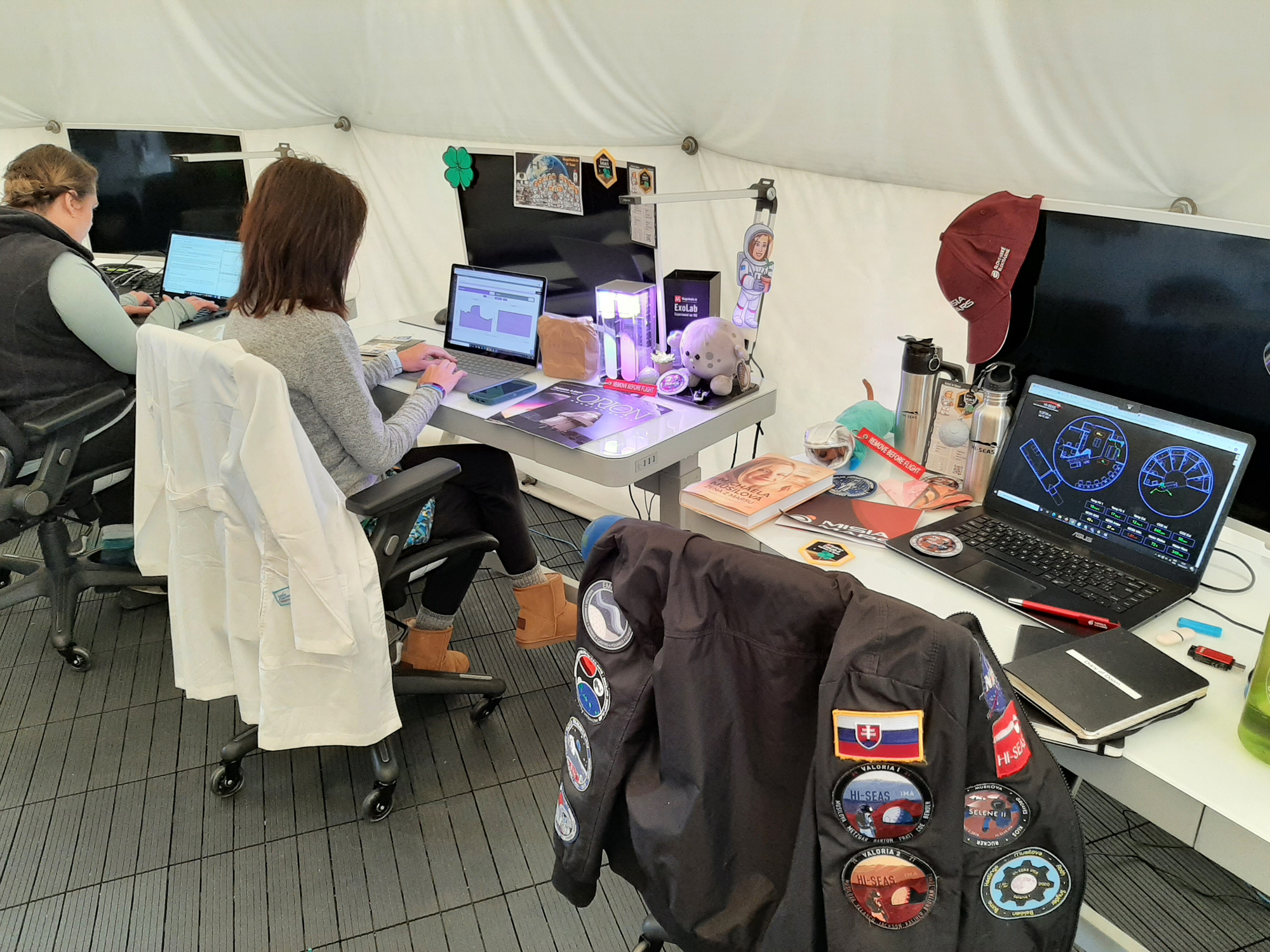The purge of the HI-SEAS habitat — Commander's report: lunar day 2

Dr. Michaela Musilova is the director of the Hawaii Space Exploration Analog and Simulation (HI-SEAS) program, which conducts analog missions to the moon and Mars for scientific research at a habitat on the volcano Mauna Loa. Currently, she is in command of the two-week Selene III lunar mission and contributed this report to Space.com's Expert Voices: Op-Ed & Insights.
Commander's report for the Selene IV moon mission at HI-SEAS
Lunar day 2 (March 14, 2021)
Something old, something new. This rhyme is going through my head as I'm taking in the new views inside the HI-SEAS habitat. My Selene IV analog mission on the moon has just started and already my home away from home is changing. I have been the commander of almost 30 analog moon and Mars missions, so HI-SEAS is a second home for me now. Some crews decorate the habitat, while others don't. The Selene IV crew was on the ball with making HI-SEAS their home too.
It started with the inventory. I ask each crew to take inventory of the food and other supplies that they have available to them during their mission. In this way, they find out what they can work and live with. It's also their first team exercise since it takes multiple hours and requires coordinating with one another to perform the task efficiently.
Most crews just plow through this task and move on to more exciting activities. This crew took their time to both update the way we do the inventory and to reorganize many of our supplies, including putting all of the available spices in alphabetical order. I always tease crews that do this about how long they can make such precise organization last. Most fail within a few days.
Related: Humans are both the weakest and the strongest link in the chain of space missions
Breaking space news, the latest updates on rocket launches, skywatching events and more!
The next thing I knew, a number of new posters started covering the habitat's walls. Crew Operations Officer Lori Waters brought several beautiful space posters with her, amongst other items that have started to make this research station feel much cozier. They include cute stuffed toys, mission patches and Crew Systems Engineer Bill O'Hara also kindly gave us "remove before flight" keychains from Sierra Nevada Corp.
To my surprise, even old decorations started coming down. This is something that I had a hard time coming to terms with. I treasure the old decorations previous crews leave behind, so it started to break my heart a little when the Selene IV crew decided to remove some of these older drawings and signs. Then, I realized that perhaps it was indeed time to move on and change things up a bit in the habitat. Bring it on, Selene IV crew!
My favorite new set of decorations are little colorful paper notes on our main habitat board, which contain funny quotes from my crewmembers. The board is filling up extremely quickly and we're still at the start of our mission. I'm already imagining these quotes covering half of the habitat by this mission's end. It also wouldn't surprise me if this crew will come up with new decorations and traditions for future missions at HI-SEAS.
A few decorations from previous HI-SEAS missions survived Selene IV's purge. The funniest ones include "the precious" (a reference to the Lord of the Rings movies and books), which is the name of our hot air vent where crewmembers huddle to warm up at night. There's also a sign that says "the room of requirement" above one of our two emergency exits and off-limits zones. Finally, we also have a number of rather rude signs in the bathroom alerting people to make sure to perform toilet-related tasks correctly.
We have compost toilets at HI-SEAS. They can suffer different types of leaks if the right amount of "human litter box mix" (as it has been nicknamed) is not added to the toilet and the toilet barrel isn't spun in the right direction. I admit that one of those signs is a drawing of me looking very angry and using strong language to ensure that the toilets are treated in the proper manner. These kinds of crew inside jokes always make me laugh, which is why I leave those signs up on the walls.
Related: This is the astronaut's video guide to going to the bathroom in space
Lori started the trend of redecorating the habitat and I am grateful to her for that. She definitely has a special touch with everything and everyone that she works with. On Earth, she is a co-investigator for the Magnitude.io ExoLab-8 mission and a University of North Dakota graduate student. During the mission, she will be researching food crop production by growing legume red clovers hydroponically, as well as in simulated regolith. The ExoLab project at HI SEAS will provide ground trial data, while paired to the same experiment aboard the International Space Station.
The Selene IV crew engineer is Jack Bryan, who is currently a member of the Systems Engineering and Integration team at Masten Space Systems, a startup company in Mojave, California. His job is focused on the development of the XL-1 Lunar Lander slated to deliver eight NASA instruments to the Haworth Crater on the south pole of the moon at the end of 2022. Jack's plan for our mission is to conduct research into the feasibility of combining the habitat's waste with in situ resources to form composite building materials. Jack is currently leading in the "one-liner" department, always coming up with something unexpectedly funny to say multiple times a day.
Another creative crewmember and jokester on our mission is Science Communication Officer Monica Parks. She is the vice president of information technology at Bank3 in Memphis, Tennessee. Monica holds multiple certifications in cybersecurity, information technologies, leadership and is currently enrolled in several courses that include astronomy, space mission design and operations. She is a SpaceKind alumna, citizen science communicator, an advocate for space diversity and a candidate for spaceflight sponsored by the Denver-based nonprofit organization Space for Humanity.
Bill is the only other veteran analog astronaut on the crew, apart from myself. He previously participated in a simulated space mission at the Human Exploration Research Analog (HERA) habitat at NASA's Johnson Space Center and the Haughton Mars Project Research Station (HMPRS) located in the Canadian Arctic. Currently, Bill is a lead engineer in Sierra Nevada Corp.'s Advanced Development Group and he's supporting NASA's Artemis Human Landing System program aimed at returning humans to the moon. During the Selene IV mission, Bill will be performing a case study of the HI-SEAS habitat design and operations, while testing methods for evaluating lava tubes for habitability.
Jack's competition on the crew, in terms of one-liners and funny quotes populating our habitat's walls, is in-situ resource utilization (ISRU) Mission Specialist Cameron Crowell. Cameron is an explorer and teacher at heart who taught introductory astronomy in college. At the moment, he works for the Virginia-based aerospace and defense corporation General Dynamics as a mechanical engineer running a 3D printing lab. Cameron is endeavoring to determine the iron content in the volcanic soil surrounding the HI-SEAS habitat by using a magnet to separate iron from the regolith for ISRU purposes.
Finally, my name is Dr. Michaela Musilova and I'm both the director of HI-SEAS and the commander of the Selene IV crew. My area of expertise is astrobiology, with a focus on life in extreme environments (extremophiles). That is why I really enjoy performing research during analog space missions at HI-SEAS, since we get to explore lava caves in the surroundings of the habitat and study extremophiles that can survive in those underground systems. We then perform different types of analyses in collaboration with NASA's Goddard Space Flight Center in Greenbelt, Maryland and Honeybee Robotics in New York City to understand whether similar extremophiles could be found on Mars.
Commander Musilova signing off, hearing more laughter coming from the kitchen. Apparently, I missed a joke about nuking a hitchhiker from orbit. I better find out what's going on before it'll be too late.
Follow Michaela Musilova on Twitter @astro_Michaela. Follow us on Twitter @Spacedotcom and on Facebook.

Dr. Michaela Musilova is an astrobiologist with a focus on life in extreme environments. She has a PhD degree from the University of Bristol and is a graduate from the International Space University's (ISU) Space Studies Program. Michaela's space research experience includes working at the NASA Jet Propulsion Laboratory, University of London Observatory, Canada-France-Hawaii Telescope, on NASA's and the U.K. Space Agency's MoonLite project, being an analogue astronaut and Commander of numerous simulated missions to the moon and Mars at the HI-SEAS station in Hawaii, and at the Mars Desert Research Station in Utah. Michaela is currently the Director of HI-SEAS, as part of the International MoonBase Alliance. She is also a visiting Professor at the Slovak University of Technology, Vice-Chair of the Slovak Organisation for Space Activities, Adjunct Faculty at ISU and the Senior Research Adviser for Mission Control Space Services Inc.
She has received numerous prizes and grants, including the Emerging Space Leaders Grant from the International Astronautical Federation (2016) and the Women in Aerospace – Europe Young Professional Award (2016), and she was selected as one of the most promising 30 under 30 by Forbes Slovakia (2015). Michaela is also actively involved in the Duke of Edinburgh's International Award, as a patron of the program in Slovakia and an Emerging Leader Representative for Europe, Mediterranean and Arab states. Furthermore, she enjoys participating in STEAM outreach activities from teaching at schools, giving public presentations, to working with the media and more, as well as encouraging people to pursue their dreams. For instance, she is an Advisory Board Member of the STEM Punks immersive programs for students and teachers.




